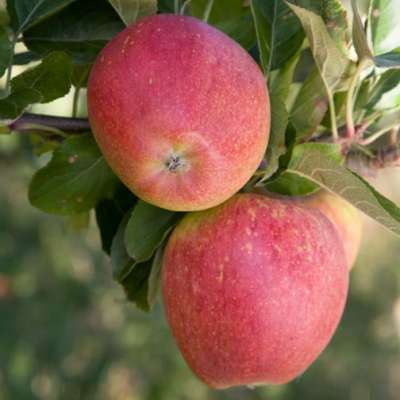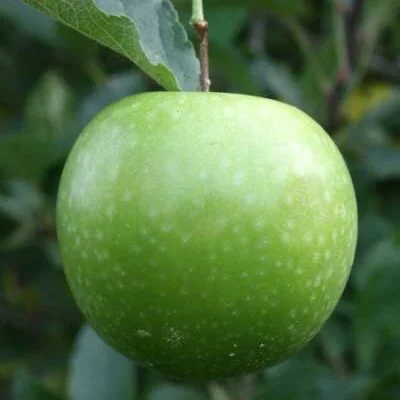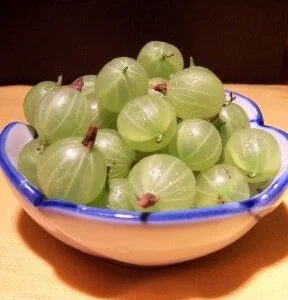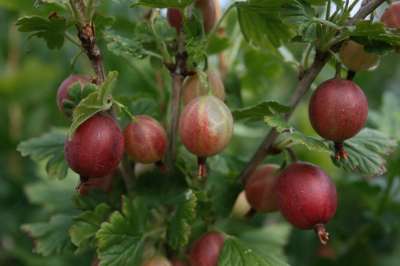Your basket is currently empty!
GROWING STRAWBERRIES IN THE NORTH
Living higher up in the country – and also those of you who maybe have a garden or plot with a cold, exposed aspect which may be in a bit of a frost pocket – means growing delicious strawberry plants is a little bit more of a challenge, but still entirely feasible. You just need to give a little more thought to the planning. Hopefully this guide will put you on the correct route to achieving the best results from these most popular of soft fruits.
Lots of different aspects come into focus. The variety, cultivation practices, siting and aftercare all play an equal part.

Planning makes perfect
Firstly how and where do you intend to grow your strawberries? Is there a choice or are you forced to rely on one situation and growing technique? Outdoor growing in conventional rows is still very commonplace and will bring about the greatest yields. However presumably having come this far that area must be colder than average. But even here there are tips you can employ to ensure crops are more regular. The greatest asset you have is the ability to cover the crop at key times. This tends to be at flowering time and shortly afterward. This is after all when the maximum damage from frosted flowers occurs and this will reduce or eliminate your crop completely. With a little planning it isn’t too painful to simply cover over the plants at flowering time if a late frost threatens. Cloches are a great way to do this, you can get glass or plastic ones that look like a miniature plastic polytunnel. These are very effective because it allows air circulation between the cover and the plants. But in the absence of these, you can simply throw a plastic sheet over and weight it down with clods or bricks. This may not completely protect them from very harsh frosts but it will help a lot. You can also use horticultural fleece. As a last resort even newspaper tents laid over individual plants can help but aren’t much use if the night is windy as well.
Be sure to remove the covers or cloches during the daytime to allow pollinating insects access to the flowers, otherwise blossom set may be significantly reduced.
One sure way to tell if your potential crop has been damaged is when the flowers go black in the middle – a sure sign of frost damage.
You need to pay attention to late frosts for a week or two after blossom set as well. After that, even in the North, frosts are usually over with for the year.
If there is a choice in siting then a full sun aspect may not automatically be the best spot. Plants grown in part shade or with a higher overhang of branches or near to a hedge for example may often escape more significant frosts compared to plants grown in a more open or sunny position.
Soil may also influence frost damage, especially over winter. Lighter, sandier soils hold less moisture so freeze solid less often and are warmer at all times of the year. Heavy soils will be colder. So if you’re blessed with the latter try to improve the consistency before planting. You could also think about raising the level of the planting area a little before planting takes place.
Protected Cropping for strawberries
Is a great advantage when you have less than ideal conditions. A more permanent cloching system is of great benefit or you can grow the plants in the ground in a polythene tunnel. Strawberry plants in pots and growbags can be cultivated in a greenhouse or even a conservatory or sun room.
Some varieties are better than others for growing under cover. Cambridge Vigour and Elvira come highly recommended for this type of cultivation.
Growing in hanging baskets is largely to be avoided unless they can be kept under cover, because the air temperature when elevated is going to be consistently colder than for plants grown on the ground.
The best planting time for strawberries
Strawberries can normally be set out at any time of the year. The traditional bare rooted season from October to March remains popular and usually brings about good results. But it might not be the best way forward for you. In colder areas planting a pot grown plant from July-September for cropping the next summer is a huge recommendation. The plants will get fully established well before winter gets underway. If you can inly buy bare rooted runners later on in the season then think about potting them up individually and keeping them in a cold greenhouse until Spring gets underway and plant them out then. Make sure they are well hardened off by standing them outside during the day and bringing back in night, before planting them out for good.
Aftercare hints
Try not to feed with a high nitrogen fertiliser. This is because soft, lush growth is more prone to frost damage. Maintaining a good layer of straw around the crown of the plants will help insulate the plants during the winter so this is a very good idea. It is often suggested that the old growth is cut back in the Autumn to tidy up the plants but in harsher conditions leaving it on the plant until the following early spring will also give added protection over winter. Get rid of it just before flowering starts the next Spring.
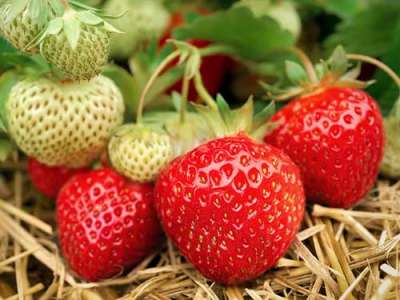
Planting distances
Will remain unaffected; 12-15” between plants and 36” between rows is perfect.
The best varieties of strawberry for Northerly locations
Variety selection is probably the most important choice you will make when it comes to growing strawberries in colder climates. Getting the right plants can make the world of difference. Here is a list of good varieties that we know can perform well when weather conditions are a little less certain and which can cope with the cold. A lot of the older types seem to do better in the North, but there are some newer Scottish raised varieties that will perform well too.
Very early varieties are to be avoided because they will be much more likely to get frosted. Similarly some of the very late perpetual varieties, which often continue to ripen well into October in the South, may have a more reduced season.
Cambridge Vigour strawberry plants
Not to be confused with the more famous Cambridge Favourite, this has never the less been a popular variety for many years, especially in the 1960’s and 1970’s. Despite the name it tends to make a doughty, compact dark leaved plant with flowers which have frost tolerance. Second early in season, the bright red moderately sized fruits have a great flavour. Suits dessert or freezing, jams etc.
Scottish raised late maincrop variety that normally ripens around mid July. Glossy red elongated fruits and characteristic crinkly leaves. The texture of the fruits is fairly firm but the flavour is top class, infact one of the best of all varieties. A good cropper and highly recommended to follow on from the mid season varieties to extend your picking time.
Well known and one of the predominant commercial varieties of the last twenty years, Elsanta is suitable for all parts of the country including the North where it does well. A taller vigorous plant with good runner production and large crinkly foliage, large flowers and bright almost brick red glossy fruits. Has a very good flavour, suiting all purposes. Mid season, ripening just a few days after Cambridge Favourite. Best for open ground production.
A favourite variety for many years but seems to be much scarcer now. A compact dark leaves plant with well flavoured quality fruits ripening second early season. Sometimes gets some mildew but otherwise dependable and healthy.
Red Gauntlet strawberry plants
A popular garden variety for over thirty years. Red Gauntlet is vigorous but with a low habit, and enjoys good disease reisstance, resistant to Red Core and Botrytis. Very prolific and heavy yielding, with good old-time true strawberry flavour. The season is a long one, as Red Gauntlet often fruits twice, with the maincrop ripening mid season and additional flower trusses providing Autumn fruits during better seasons. Long lived plant, reliable and recommended. Suits all growing methods.
A good early for colder gardens, bred by HRI East Malling. Good sweet flavour, prolific. Ripens soon after Honyeoye.
Pronounced ‘Shirano’ and recommended as a much improved alternative to the popular ‘Mara des Bois’. Still with the same wonderful rich aromatic flavour inherited from the wild woodland Strawberry, but with much better disease resistance, especially Botrytis. The harvest period starts in July and goes on right through to the frosts! The lovely bright attractive colour and the very fragrance of the fruit invites you to sample the perfect flavour. A compact plant with dark green lustrous foliage. A truly excellent introduction. Outstanding for it’s cropping period and flavour. Perfect for dessert and makes a really tasty jam. Ideal for container growing, growbags etc.
Raised at H.R.I. East Malling from a cross between Elsanta and Allstar. Eros is an alternative variety to Elsanta with a higher percentage of class 1 fruits, fewer mis-shapen berries, a higher yield potential and greater resistance to Red Core. The fruits have an attractive glossy skin with a good mid-red colour and are regular and conical in shape. Texture is similar to Elsanta and well flavoured.The plants are moderately vigorous with an erect and open habit that displays the fruit well. Eros has the advantage that the crown of the plant is more frost hardy in northern areas. A lovely new mid-season variety with heavy yields of exceptional quality fruit.
Doughty old timer with low compact growth, dark leaves and predominantly wedge shaped dark red fruits. One of the best flavoured of the Autumn fruiting varieties, and one of the hardiest. Produces few runners; excels in the open ground and also in containers. Fruits in July and again September/October or until finished by frosts. Best cropped for 2 seasons.
The wonderful new variety that we introduced in 1988. Honeyoye is an early variety for picking early June onwards. The bright red fruits are medium sized, very attractive and have an excellent flavour. Very heavy cropping for an early variety, far higher quality, good, healthy growth and bright glossy red fruits with a firm, juicy, mouth-watering flesh. Easy to pick. Ideal for exhibition, by far the best flavoured early variety. A new variety from America with a great future. The best early for Scottish and Northerly locations.
Well suited to frosty areas because of the longer flowering season which means some blossoms are likely to escape frost damage. A superb new mid-late season British raised strawberry with a 4 week picking season which goes on for 10 days after Elsanta, the predominant mid season variety. It is typical to be harvesting Lucy from Mid June to Mid July. Lucy bears attractive, shiny heart shaped berries that have a very juicy, sweet taste that are well displayed for ease of picking. Recommended as a very easy variety to grow, Lucy is resistant to crown rot and also performed the best of all varieties last summer, when so many were a rain washout, Lucy kept producing good, well flavoured fruit. The parentage is complex, involving an Autumn fruiting and a Day neutral variety, and this is undoubtedly what has contributed to the extra-long season. Lucy is a very hard working variety that will become a staple of many planting programmes for years to come. Easy to grow, lovely flavour and a super-long season.
Malling Opal strawberry plants
This is the best perpetual for colder frosty locations. Malling Opal has quickly established itself as one of the very best everbearing/perpetual strawberries. A little earlier in season than most of this class, the fruits begin to ripen in early August typically, and then go on until the frosts. This can be extended still further with cloching. Malling Opal has cropped very well in containers; it has been suggested that such plants brought into a mildly heated greenhouse or conservatory, would still be cropping at Christmas. The berries of this high quality variety are large and sweet and also relatively soft – a trait that has endeared it already to home gardeners who do not like ‘crunchy’ strawberries. Malling Opal has some resistance to mildew and is very much an ideal home garden variety.
So to recap, follows these hints and tips for getting the best of your strawberry crop in frosty or northern areas:
- Grow the correct varieties
- Grow under cover if practical
- Provide protection at key times for outdoor crops
- Avoid high nitrogen fertilizers
- Leave straw cover around the pl;ants over winter
- Plant during the Summer with pot grown plants
- And hopefully you will then get great results from your luscious strawberries, wherever you may be gardening!



